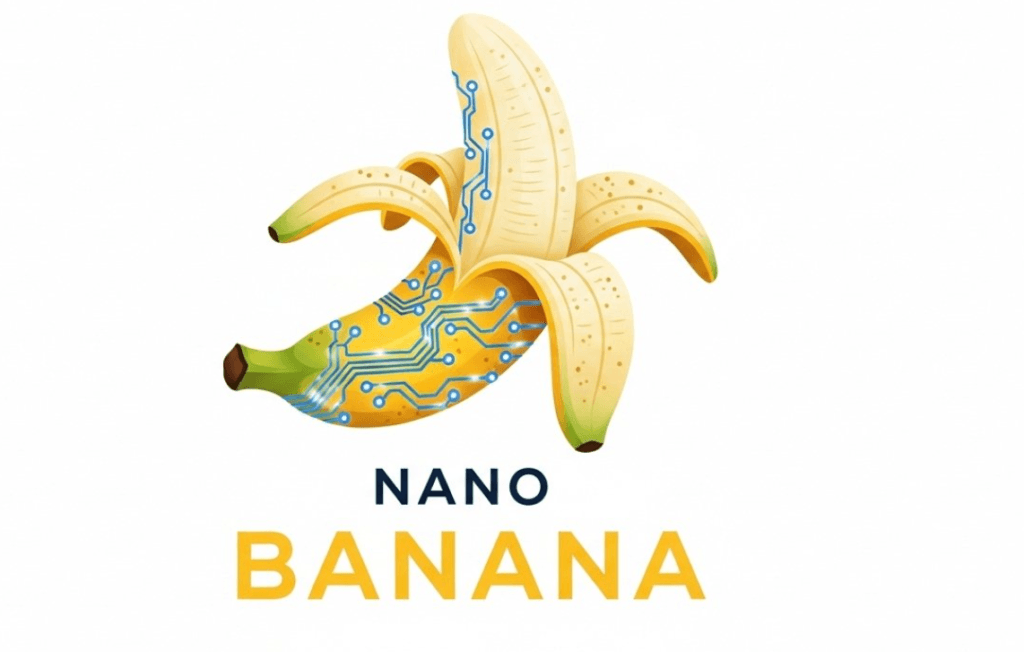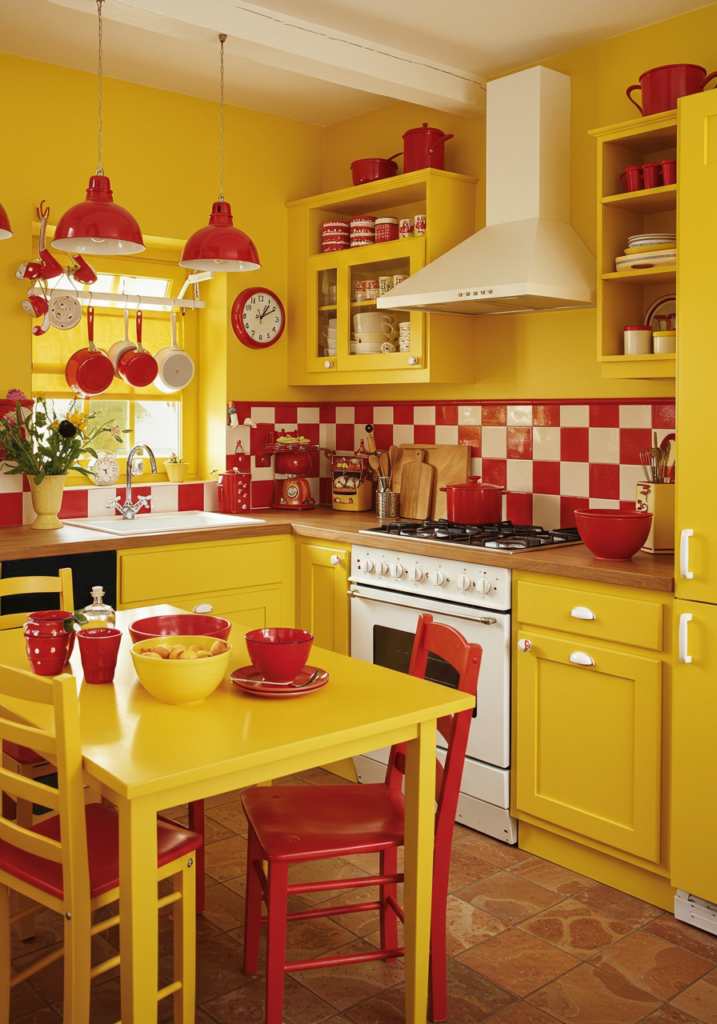
Sarah stared at her cramped apartment living room, feeling that familiar wave of frustration wash over her. The beige walls screamed “rental property,” the hand-me-down couch clashed with everything, and somehow, despite her best Pinterest efforts, nothing looked quite right. She’d spent countless hours scrolling through design blogs, bookmarking inspiration photos, and wondering how those picture-perfect rooms would actually look in her real, imperfect space.
“I wish I could just tell someone exactly what I want and have them show me how it would look,” she muttered, staring at yet another “mood board” that seemed impossible to translate into reality.
Little did Sarah know, Google’s revolutionary Nano Banana AI was about to make that exact wish come true. This groundbreaking technology, now integrated into Google Gemini, would transform how millions approach home design forever.
When Google Gemini’s Nano Banana AI Decided to Play Interior Designer
In the labs at Google DeepMind, something extraordinary was happening. Engineers weren’t just building another AI tool—they were creating what would become known as Nano Banana AI, a digital mind reader integrated into Google Gemini that could peer into your design dreams and make them visible with nothing more than a casual conversation.
Nano Banana AI Google Gemini represents a paradigm shift in artificial intelligence image editing. This revolutionary model, officially called Gemini 2.5 Flash Image, emerged from Google’s cutting-edge research and has quickly become the most talked-about AI tool of 2025.
The breakthrough came when the Google Gemini team realized something profound: people don’t think in technical terms when they imagine their ideal spaces. We don’t say “apply a warm neutral color palette with complementary accent pieces positioned at optimal focal points.” We say things like “make this cozy” or “I want it to feel like a coffee shop” or “add something that makes me smile when I walk in.”
So they taught Nano Banana AI to speak human.
The Magic Moment: When Nano Banana AI Words Become Reality
Picture this: Sarah opens the Google Gemini app, snaps a photo of her disappointing living room, and types a simple message: “Make this space feel like a cozy reading nook where I’d want to spend Sunday afternoons.”
What happens next with Nano Banana AI feels like pure magic. The Google Gemini-powered system doesn’t just randomly scatter some cushions around or apply a sepia filter. It understands. Nano Banana AI Google Gemini sees the natural light coming through her window and suggests a reading chair positioned just right. It notices the awkward corner and transforms it into a built-in bookshelf. It takes that harsh overhead lighting and softens it with warm table lamps that cast the perfect golden glow.
In seconds, Sarah is looking at her exact room—same dimensions, same quirks, same radiator she can never hide—but transformed by Nano Banana AI into a space that looks like it belongs in a magazine spread about hygge living.
The Nano Banana AI Designer in Your Pocket
Meet Tom, a freelance graphic designer who could create stunning digital art but couldn’t figure out why his home office felt so uninspiring. Traditional interior design software left him overwhelmed with technical details he didn’t care about. He just wanted his workspace to feel creative and energizing.
With Nano Banana AI, Tom discovered he could have a conversation with his space through Google Gemini. “Make this room feel like a creative studio where ideas flow freely,” he typed into the Gemini app. Nano Banana AI Google Gemini responded by suggesting exposed brick wallpaper, industrial lighting, and a standing desk arrangement that actually worked with his weird-shaped room.
But here’s where Nano Banana AI gets really interesting: when Tom said, “Actually, make it more like a cozy artist’s cabin,” the Google Gemini AI didn’t start from scratch. It kept the elements that worked and seamlessly shifted the aesthetic—trading industrial fixtures for warm wood accents, maintaining the desk placement but surrounding it with plants and natural textures.
It was like having an interior designer powered by Nano Banana AI who could read his mind and instantly show him exactly what he was picturing through Google Gemini’s advanced image editing capabilities.
The Nano Banana AI Revolution Hidden in Plain Sight
What makes Nano Banana AI Google Gemini feel revolutionary isn’t just that it can edit images—it’s that it understands the emotional language of home design. When someone uses Google Gemini to say they want their kitchen to feel “more welcoming,” Nano Banana AI knows that might mean softer lighting, warmer colors, and perhaps a breakfast nook that encourages lingering over morning coffee.
Nano Banana AI has learned that home design isn’t really about furniture and paint colors—it’s about creating spaces that make us feel something. It’s about that moment when you walk into a room and think, “Yes, this is exactly right.” Google Gemini’s integration of this technology makes professional-level design accessible to everyone.
When Everyone Becomes a Designer with Nano Banana AI
Maria had always admired beautifully designed homes but felt intimidated by the process of creating one herself. Design consultations were expensive, and she worried about making costly mistakes. But when her sister introduced her to Nano Banana AI Google Gemini, everything changed.
She started small, uploading a photo of her daughter’s bedroom to the Google Gemini app and typing, “Make this feel like a princess castle but not too over the top.” Nano Banana AI responded with subtle purple accents, fairy lights that looked elegant rather than childish, and a canopy bed treatment that was magical without being impractical.
Emboldened by success with Nano Banana AI, Maria moved on to her master bedroom in Google Gemini: “Create a relaxing retreat that feels like a luxury hotel.” The AI understood immediately, suggesting a neutral palette, layered lighting, and that perfect balance of comfort and sophistication she’d never been able to achieve on her own.
Room by room, Maria was transforming her home, guided by Nano Banana AI Google Gemini that seemed to understand her vision better than she understood it herself.
The Science Behind the Nano Banana AI Sorcery
The magic of Nano Banana AI lies in what Google engineers call “visual consistency”—but what users experience as something much more profound. Nano Banana AI Google Gemini doesn’t just plop objects into images; it understands how spaces actually work. It knows how light falls, how shadows should behave, how colors interact with different textures.
When you ask Nano Banana AI through Google Gemini to add a bookshelf to your living room, it doesn’t just paste in a generic shelf. It considers your room’s proportions, the existing furniture, the natural light sources, even the style cues from what’s already there. The result from Nano Banana AI looks so natural, so perfectly integrated, that friends visiting Maria’s newly redesigned home couldn’t believe she’d done it all herself using Google Gemini’s AI capabilities.
The Nano Banana AI Ripple Effect
As word spread about this remarkable Google Gemini tool, something unexpected happened. Professional interior designers, initially worried about being replaced by Nano Banana AI, discovered they had gained a superpower. Instead of spending hours creating basic visualizations for clients, they could focus on the creative vision and use Nano Banana AI Google Gemini to instantly show multiple variations and refinements.
Rachel, an interior designer in Portland, found that client meetings became more dynamic and collaborative with Nano Banana AI. “Instead of me describing how something might look, we can explore ideas together in real time using Google Gemini,” she explains. “Nano Banana AI helps me communicate my vision, and it helps clients communicate theirs. We’re all speaking the same visual language.”
The Homeowner’s New Reality
Back in her apartment, Sarah can hardly believe the transformation—not just of her space, but of her relationship with her home. What once felt like an unsolvable puzzle now feels full of possibility thanks to Nano Banana AI Google Gemini. She’s learned that good design isn’t about having the perfect budget or the right training—it’s about understanding what makes you feel at home, and Nano Banana AI makes that understanding actionable.
The beige walls that once depressed her are now a warm, creamy backdrop for the life she’s building. The hand-me-down couch, recontextualized with the right pillows and lighting suggested by Google Gemini’s AI, has become her favorite reading spot. And that awkward corner? It’s now a plant-filled nook designed with Nano Banana AI that makes her smile every time she walks in.
Looking Forward: The Future of Living with Nano Banana AI
Nano Banana AI Google Gemini represents something bigger than just a cool tech tool—it’s a glimpse into a future where our homes truly reflect our personalities and needs. A future where the barrier between imagination and reality is as thin as a simple conversation with Google’s revolutionary AI.
As Nano Banana AI continues to evolve within the Google Gemini ecosystem, we’re moving toward a world where anyone can create spaces that support their best life, where home design becomes as personal and accessible as choosing what to wear each morning.
The revolution isn’t just in the Nano Banana AI technology—it’s in the democratization of design, the liberation of creativity from technical barriers, and the simple but profound idea that everyone deserves to live in a space that makes them happy.
And it all started with Google teaching Nano Banana AI to understand what we mean when we say, “I want this to feel like home.”
Try Nano Banana AI through the Google Gemini app today—your dream space is just a conversation away. Experience the future of home design with Nano Banana AI Google Gemini’s cutting-edge image editing capabilities.



